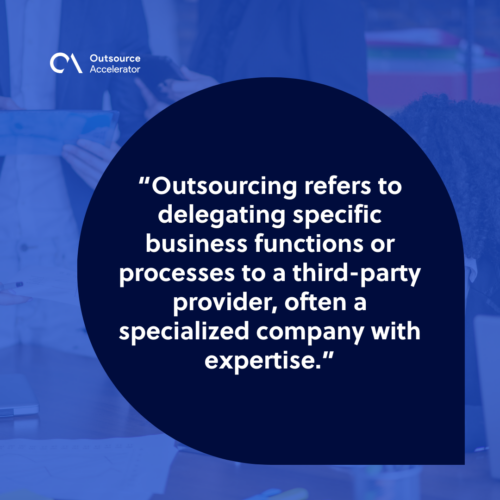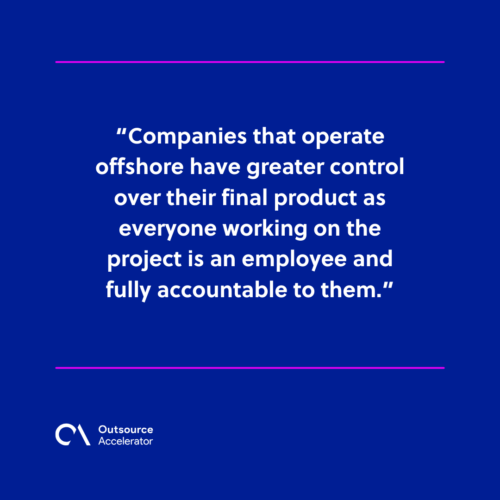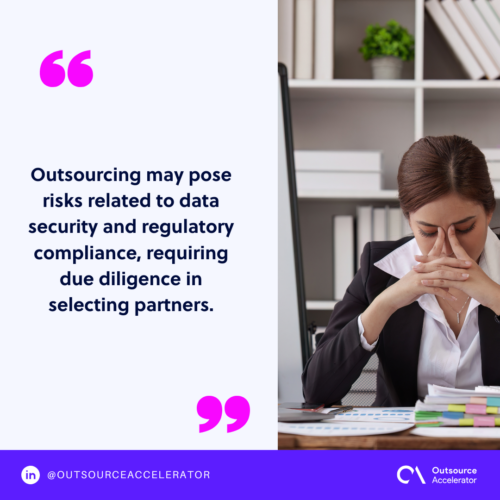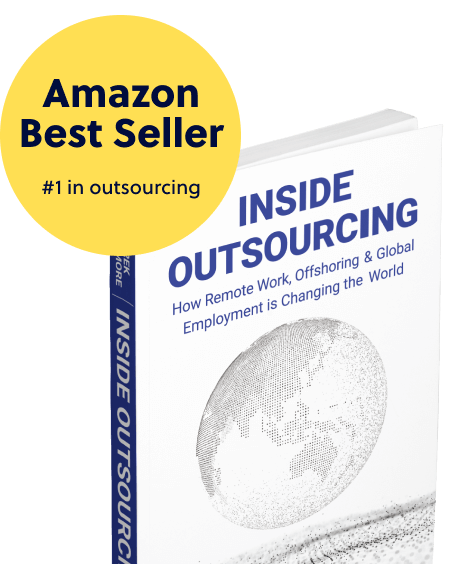Outsourcing vs. Offshoring: What is the difference and what works best for your business?

This article is a submission by VIZX Global. VIZX Global short for Vision Execution, is a BPO solutions provider that was established with a clear vision: to nurture transformative ideas from conception to fruition, ultimately cultivating thriving enterprises.
In today’s globalized economy, businesses constantly seek ways to optimize operations, enhance overall efficiency and cut costs. This pursuit has resulted in the use of offshoring and outsourcing strategies.
Outsourcing and offshoring are often used interchangeably, but they have distinct meanings and implications for a business.
Understanding these concepts is, therefore, vital for a company looking to implement the best strategy for its growth and sustainability.
Understanding Outsourcing
Outsourcing refers to delegating specific business functions or processes to a third-party provider, often a specialized company with expertise. Depending on the business’s needs and objectives, these providers can be located domestically or internationally.
Commonly outsourced functions
- Customer service and support: Call centers, live chat, and email support.
- IT services: Software development, cybersecurity, and network management.
- Human Resources: Payroll processing, recruitment, and employee training.
- Finance and accounting: Bookkeeping, tax preparation, and financial analysis.
- Marketing and sales including digital marketing, lead generation and social media management.

Benefits of outsourcing
Outsourcing reduces the financial and organizational burden on a company. A company that outsources its functions will also access a broader pool of workers than its in-house staff.
Other outsourcing benefits include:
Cost savings
Contracting tasks instead of hiring a full-time employee relieves a company of hiring costs and benefits like vacation and healthcare days. Other costs a company can save from leveraging third-party expertise include facilities and expensive technology.
Access to specialized skills
Most businesses lack the budget to accommodate full-time employees who handle specialized tasks. By subcontracting these tasks, they can afford top talent without incurring salary costs.
Outsourcing partners also bring industry knowledge and technical expertise that might not be available in-house.
Focus on core business
Delegating non-core tasks to an outsourcing partner frees a business to focus on strategic growth and innovation.
Scalability and flexibility
Businesses can scale operations up or down based on demand. With outsourcing in place, a business can adjust to these changes without the complexities of hiring or layoffs.
Understanding offshoring
Offshoring involves relocating business operations or production to a different country to take advantage of lower labor costs, tax benefits, or favorable economic conditions.
In offshoring, the business can move its employees overseas or hire a new team in the respective location.
Offshoring opens up a company’s talent pool, giving it an advantage in accessing a new consumer market. Unlike outsourcing, the company’s offshoring functions remain with the in-house and not outside contractors.
Types of offshoring
- Manufacturing offshoring: Setting up factories in countries with lower production costs.
- Service offshoring: Establishing business process operations such as IT services, back-office support, or research and development in offshore locations.
Benefits of offshoring
Generally, offshoring increases a business’ global reach and still allows it to maintain control of its products and services.
Other benefits of offshoring include:
Cost reduction
Hiring remote teams with lower living costs in a different geographic location significantly reduces costs. The wages and cost of transportation and resources in these locations are lower, reducing a company’s expenses.
Internal control of business functions
Offshoring means a company maintains its proprietary information, internal guidelines, and trade secrets in-house, significantly reducing the risk of data breach or theft.
Companies that operate offshore have greater control over their final product as everyone working on the project is an employee and fully accountable to them.

24/7 business operations
With their presence in different time zones, businesses can operate around the clock.
Market expansion
Establishing operations in a new country can facilitate entry into that market and improve global reach.
Access to global talent
Companies can tap into highly skilled workers in emerging markets. Offshoring allows companies to pick from talented workers around the globe, making it easy to find individuals with competencies and experiences that closely match their needs.
Key differences between outsourcing and offshoring
Location of business operations
Offshoring entails relocating a business operation to a foreign country, taking advantage of lower labor costs and favorable regulations.
On the other hand, outsourcing only contracts specific business functions, and the third party may not necessarily be in a different state.
Business oversight and control
Offshoring comprises building a physical presence or subsidiary so that the company has greater control over its operations as it manages the offshore facilities. Outsourcing delegates external partners control and oversight, hence limited supervision by the main business.
Cost structure
Outsourcing reduces costs by leveraging external expertise, while offshoring reduces costs through lower labor and production expenses.
Risk factors
Outsourcing has fewer upfront investments, lowering the business’s risks.
The risks in outsourcing include data security, vendor reliability, and intellectual property protection. However, these depend on the third-party providers, hence the need for diligence when looking for a partner.
On the other hand, the risks in offshoring include cultural and regulatory challenges in the offshore locations, such as political instability, currency fluctuation, and geopolitical tensions.
Which strategy works best for your business?
Choosing between outsourcing and offshoring depends on your company’s goals, budget, operational needs, and risk tolerance.
1. Business objectives
Defining your objectives and the desired results will clarify the strategy that aligns best with your business needs.
- Outsourcing may be the best option for a business that wants to cut costs and streamline operations without managing an office outside its geographical location.
- If the aim is to establish a long-term presence in a specific market and control the workforce directly, offshoring could be the right fit.
2. Cost vs. Control
Outsourcing provides cost savings and operational flexibility but may require relinquishing some control over business functions.
On the other hand, offshoring allows for more control but involves higher initial investment and management responsibilities.
3. Time sensitivity
Outsourcing is ideal if your business needs immediate expertise and quick implementation, as it leverages existing third-party infrastructure.
However, if you are willing to invest time in setting up offshore operations, you will enjoy the long-term cost and efficiency benefits.
4. Compliance and security considerations
Outsourcing may pose risks related to data security and regulatory compliance, requiring due diligence in selecting partners. Offshoring demands an understanding of local labor laws, tax regulations, and political stability to mitigate potential risks.

Hybrid approach: The best of both worlds?
While you can do with either offshoring or outsourcing, companies prefer a hybrid approach, combining both strategies.
For instance, a business might outsource customer service to a specialized provider while offshoring IT development to its own subsidiary in a cost-effective location. This strategy allows companies to balance cost efficiency, control, and scalability.
The debate between outsourcing vs. offshoring is not about which is better but which is more suitable for a business’s needs.
Decision-makers must evaluate cost, control, expertise, and long-term goals to determine the most effective strategy.
In many cases, a blended approach can provide the optimal balance, allowing businesses to remain competitive in an ever-evolving global landscape.
By understanding the distinctions and benefits of each model, business leaders can make informed decisions that align with their growth objectives and operational requirements.







 Independent
Independent




